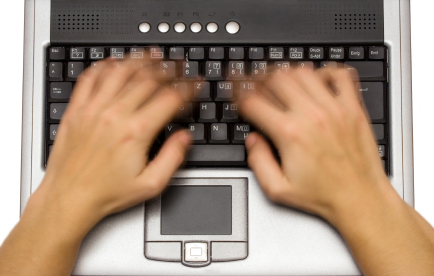
Can I be candid with you? I don’t read every email I receive. I’m not even talking about forwards of cute stories that get massed emailed. I almost never read those. I’m talking about informational emails. The emails which have information in them I probably need. I don’t often absorb all of it.
I know. It sounds awful. Hopefully, someone in the comments will let me off the hook of seeming cruel or weird and admit they are the same way. But, here’s the fact. I’m not detail-oriented. At all. If you send me a “book email” – one which appears exceptionally long and full of details – you often lose me before I really get started. (Again, just being honest.)
Keep in mind, I receive hundreds of emails everyday. Many times I am one of many recipients. I know it’s probably vital information. You wouldn’t send it to me unless you wanted me to read it, right? But, if I want to be effective at all, I simply can’t digest everything in an extremely long, detailed email. Sometimes, I have to email back and ask for a summary.
So, what can we do about it?
I could tell you I’ll change. I’ll bite the bullet and read all longer than necessary emails, but the truth is I probably won’t. History proves otherwise. Plus, there are only so many hours in every day. Show me more than a few paragraphs and I’m probably out of here. Again, time simply won’t allow it.
Frankly, sometimes when the email gets too long it’s time to have a meeting. But, when email is the only practical means, ultimately, we have to write better emails.
Let me give you a few suggestions.
And, I should tell you, I’ve given these to staff members who write really long – packed with detail – emails. Some have taken my advice and learned it actually increased their communication results. People seemed to more closely read their emails. They actually appeared to know more of the details the person emailing was trying to communicate. And, isn’t that the goal?
Here are 5 suggestions for better emails:
Personalize the email
This has to be said first. Mass emails get read less by me. If I see there are many people on the list of recipients, I figure I’m not that necessary as a reader. Someone else will respond. (I know, to some this seems arrogant of me, but at least I’m truthful. And, I suspect I’m not alone here either.) An email written just to me is far more likely to grab my attention. Thankfully there are programs now which do a mail merge type function for you.
Make the main point early
What is the point of the email? What do you want to communicate if I get nothing else. Say that immediately. If it’s multiple pieces of information, say that up front too. It might be helpful to bold or underline the main ideas, (but don’t use weird colors or oversized font.) Highlight the most pertinent facts you want to convey, dates or locations, especially if the email is very long. Here’s the bottom line, if you don’t capture my attention soon in a longer email, I’m probably less likely to absorb the key points you want to make sure I get. I realize that’s my fault, not yours, but if you want the information absorbed – you’d want to know your audience, right? And again, I suspect I’m not alone. If you write especially long emails, I suspect you are losing more readers than you think.
Highlight or bullet-point main ideas
People can often read lists easier than paragraphs when dissecting detailed information. The points you want to make will seem more streamlined and easier to follow if you number them, use bullet points or highlight them in some way.
I hear frequently people like how I do this with blog posts like this one. Some wired like me may only read the points in bold. I already know this, so I try to write accordingly. If that’s you, you’re not reading this right now – are you?
Another suggestion here is to offer the main points to consider, such as an upcoming meeting date and time, and then provide a clickable link to access additional information for those who want or need more details. I write a Saturday informational email to our church and try to use this one – as well as bold highlighting the main subject in each paragraph – often.
Consider an opening summary statement.
On especially longer emails, or emails with lots of details, consider opening with the main highlights for quick and busy readers, listing only the points you’ll expand upon later.
You could write something such as, “In this email, I hope to address several issues. I want to talk about…”. Then list the things which will later be expanded upon in the email.
Readers can scan down if they want or need more details, but this way your main ideas get attention and hopefully you capture the reader’s interest enough so they read what you have to say before they disappear.
Proofread
Before hitting the send button, read over it as if you were reading it aloud for the first time. Does it sound like you? Is it complete in thought? Are there obvious grammatical or spelling errors? Are there any lines or words you could cut and the point still be made? (If so, cut them.) You’ll lose some readers if it is not a tightly written email.
There might be more I could add, but this post is getting kind of long. And, I’ve already lost some of you. The main point is if you want to make sure the email you took time to write is read consider the reader and how it will be read – or not.
Here’s to writing better emails.
What suggestions do you have?








 Logging you in...
Logging you in...
 Loading IntenseDebate Comments...
Loading IntenseDebate Comments...
Thanks Pastor Ron. Once again you have sent out a helpful post. I need to work on proof-reading my mails before hitting send.
Thank you!
Hey … great article!
I am requestion permission to re-blog a portion on http://www.churchgrowbot.com We are an email service for churches.
Of course, I’ll link back here for the full article.
Doug K
Sure. That would be great.
Ron, I am with you. Yes, yes and yes. Get to the point. I think of it like a newspaper article. Make sure the headline is attention – grabbing, and then get to the point!
Thanks Skip. I hope you are doing okay.
You practice this in your blog.
When you write more content, I still read as I know it will be valuable. You have me following, learning.
Permission not to reply nor read.
Ha! Thank you. Read and replied!
One of the things I shoot for in my emails, (and in blog comments too…) is keeping it concise. If I can't say it effectively in a few words, I know I'll lose someone. Because I get lost in the details too. (There, I let you off the hook.)
Awesome. Thank you!